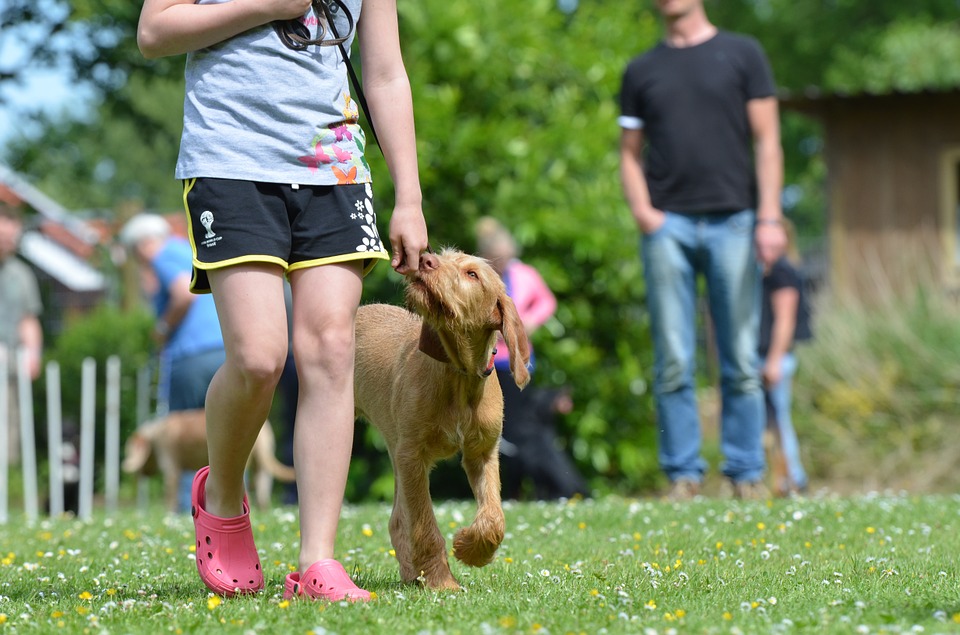Teaching Kids How to Interact with Dogs
Fostering Positive Relationships Between Kids and Dogs
We agree completely: Kids and dogs make the cutest couples! Unfortunately, they can also have negative and even dangerous exchanges.
Approximately 42% of dog bites in the United States involve people 14 or younger. This statistic may be scary, but a large percentage of these bites are relatively minor and can be prevented. If you have a child, a dog, or a dog and a child, we recommend taking these steps to keep their interactions safe and positive.
 Teach, Teach, Teach – and Then Teach Some More!
Teach, Teach, Teach – and Then Teach Some More!
We all know that dogs benefit from training, but so do children.
To encourage appropriate interactions with dogs, you should start teaching your child as soon as possible and continue the lessons as they grow older. For example, if you have a baby or toddler, guide their hands gently and slowly when touching a dog to avoid exciting or flailing gestures, which can agitate animals.
Similarly, kids should understand that dogs aren’t toys and should be treated gently. You should also teach young children to respect a dog’s boundaries and never encourage them to hug dogs, no matter how cute it may seem. While humans find this type of interaction heartwarming, it can actually increase stress levels in dogs.
Learn to Speak Dog
No, you don’t have to start barking, but gaining a better understanding of dog communication can be a valuable tool during child and dog exchanges.
It’s commonly assumed that a wagging tail means a dog is happy, but this generalization couldn’t be further from the truth. In fact, a tail wag can indicate excitement, insecurity, friendliness, and aggression.
To get a better understanding of a dog’s current state, you should look at the eyes, mouths, ears, posture, and fur – we can help you put the pieces together, and you’ll be speaking dog in no time!
Play Supervisor
When you’re ready for a child and dog to interact, you need to provide close supervision at every age. But this doesn’t just involve being in the room; you have to be ready to physically stop a child from engaging in inappropriate behaviors – like pulling on ears or tails, poking, climbing, or hugging – and watch for signs that the dog is stressed or uncomfortable.
Common signs a dog is under stress include panting, gasping, tongue flicks, and whale eye.
Manage the Situation
One of the most important things you can do when facilitating exchanges between children and dogs involves management. This can take several different approaches.
When Your Dog Meets Children
Be your dog’s advocate! Whenever your dog meets children, make sure the environment is safe, that they feel relaxed, and that the child understands how to interact with a dog. Remember to supervise closely and stop the moment your dog seems stressed. And, if your dog isn’t comfortable around children or seems agitated, do not allow a greeting.
When Your Child Meets a Dog
If only more people understood how to interact with dogs, life would be a lot easier. Unfortunately, we make a lot of assumptions based on human forms of communication that don’t translate into the canine world. These missteps include approaching straight on, bending over them to say hi, and petting on the head. Help your child learn positive doggy etiquette by following these simple steps.
Children and Dogs in the Same Household
So, what if you have a child and a dog in your home? The short answer is that all of these recommendations still apply. However, at the same time, you can also encourage your child to play an active role in caring for your dog and being their advocate!
By teaching children at the earliest age to respect dogs and their boundaries, you can help foster positive relationships that last a lifetime.

